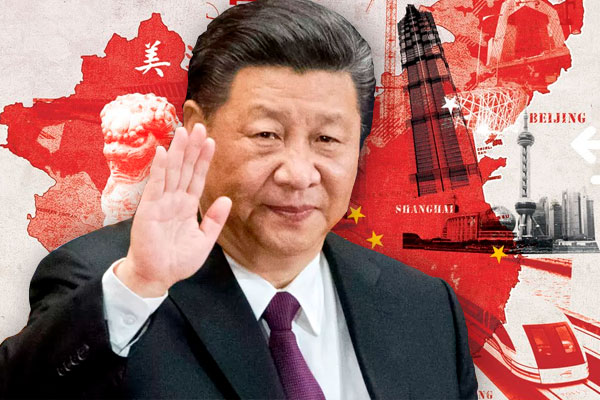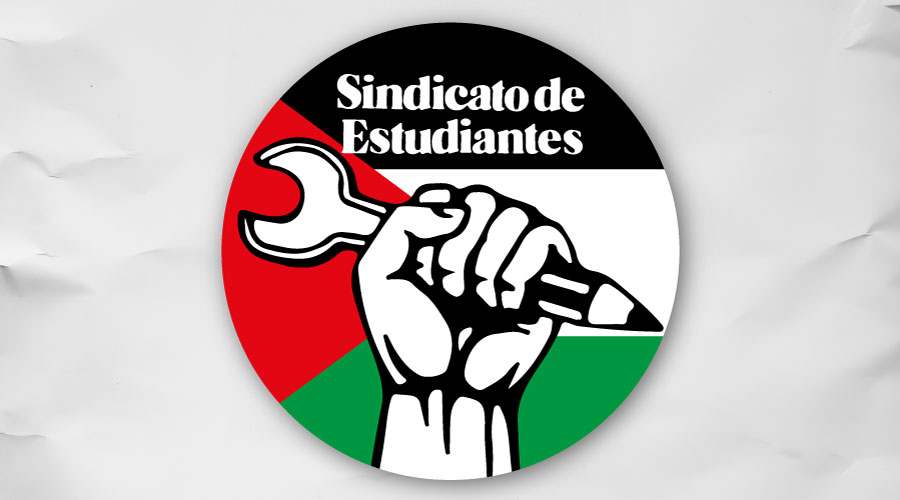The struggle for capitalist hegemony intensifies
If truth is the first victim of war, this is doubly true during a pandemic. In the golden age of information technology- in 2020 more than 4 540 million people, 60% of the world’s population, is connected to the Internet- the censorship by the mainstream media is unbelievable. But, as always when it relates to capitalists strategic interests, it is not a coincidence or a byproduct. A true and ideoneous media would unveil the social decay of the US and Europe, dismantling the attempt by capital to present the virus as a kind of biblical punishment brought about by individual irresponsibility of the citizens. It would, above all else, put in the spotlight the crimes committed by the Western Government that lead to a catastrophic handling of a pandemic where the majority of deaths were avoidable.
As part of the war being waged, western imperialism has unleashed a meticulous strategy of desinformation to hide what is happening in China a year after the pandemic outbreak. It is not an accident. The struggle for the world market and for capitalist hegemony makes it necessary. Since April last year, all information about China has vanished from the front pages and the country is only talked about tangentially, in order to declare that all successes are a fruit of the dictatorial regime, affirming that in the “free and open” societies the skyrocketing rate of deaths is the price to pay for living in a democracy and under a welfare state. Are we supposed to believe it?
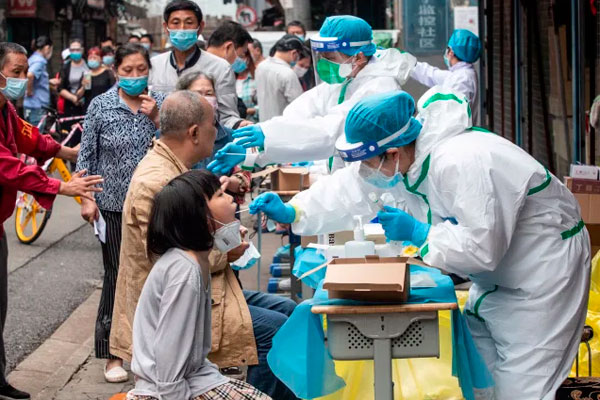
The figures are clear
Due to the difference in population amongst the different countries- going from more than 1400 million in China to330 million in the US- there is a factor which is willingly ignored but extremely useful. Looking at this rate, the US has a mortality 400 times higher than China; Germany, 200 times higher. In the Spanish State, according to official government data, the death rate would be 390 times higher than China, but if we look at figures from the Office for National Statistics, which shows 80 000 more deaths than expected, the rate would increase to 600.
Datos COVID-19 (hasta el 26/1/2021)
|
|
Deaths |
Infected |
Death Rate |
Population |
|
|
|
|
100.000 hab. |
inhabitants in millions |
Word |
2.144.452 |
99.875.897 |
|
7.700 |
US |
421.670 |
24.631.890 |
128,10 |
330 |
China |
4.808 |
99.470 |
0,30 |
1.440 |
Germany |
53.317 |
2.158.407 |
63,80 |
83 |
UK |
98.723 |
3.680.102 |
146,20 |
67 |
Spain (1) |
56.799 |
2.629.817 |
121,50 |
47.4 |
Spain (2) |
80.000 |
|
171,13 |
|
(1) Government figures (2) INE figures -excess deaths from 2020 to 2019
Source EL PAIS[1]
We can surmise that if China had the same death rate for 100 000 inhabitants of US it would surpass 1 700 000 deaths and no less than 5 000. And, in the opposite side, if US had China’s rate, the deaths would be between 1 000 and 420 000.

Although rumours about falsification of the numbers given by the Asian authorities abound, it is evident that if the Beijing regime had attempted to hide 1.7 million dead people, the spy services would already have blasted the airwaves and papers with those news. Even assuming that China’s rate is double, triple or 20 times higher than publicised, the result would even so implicate that millions of lives across the world could have been saved.
The reasons for the differences in China
Apart from the images of Bolsonaro proclaiming that the vaccine could “turn us into alligators” (2) or Trump proposing “injecting disinfectant straight in the lungs” (3), it is not difficult to draw comparisons between the measures applied in each country. What happened in the first week of 2021 is clarifying.
On the 7th of January the chinese city of Shijiazhuang, with 11 million inhabitants, went into quarantine after 117 infections were detected. In the first 24 hours 6 million PCR tests were undertaken and 40% analysed, classes were suspended, train, bus stations and airports shut.
In the same day, the Spanish State Health Ministry announced 42 160 infections and 241 deaths, but did not adopt any measure. In Germany, the government decided to close schools and non essential services on the 5th of January, but the reason was that the figure of 12 000 infections and more than 900 deaths in a day had been reached. In relation to the US, we need only to remember that, on the 6th of January, thousands of racists, fascists and deniers assaulted the Capitol.
It is far from our intention to praise the chinese authorities. We are very conscious that the Beijing regime, although draping itself on a red flag with the hammer and sickle, represents the capitalist bureaucracy and the new chinese bourgeoisie. It is no worker’s state and has nothing to do with socialism, and the capitalist and bonapartist character of Xi Jinping presidency is out of the question.
But there is also no sense to follow the western capitalist propaganda, which intends to hide that China has been able to answer and control the pandemic. The question to pose is concrete- how is it possible?
The discourse of the Western capitalist powers demands us to choose between the right to healthcare or keep the economy afloat. Millions of us, millions of working families are faced with the choice of dying with the virus, or, best case scenario, to fall into poverty if non essential activity is paralised to stop the spread. Nevertheless, that COVID-19 turned into such a fatal pandemic is a consequence and not the cause of this tragic situation.
The current catastrophe is due to decades of savage cuts and austerity politics, due to the dictatorship of the big private concerns and monopolies, including the private monopolies on the healthcare sector, to which all governments in Europe and the US bow. The origin of the current catastrophe is definitely intertwined with the organic crisis of the capitalist system, which since the Great Recession of ‘08 has not been able to be stopped, which has plainly shown the protracted twilight of US and European imperialism.
The Chinese regime has achieved a somewhat effective response in the fight against the pandemic, but that has nothing to do with moral reasons or a bigger concern for the welfare of the people. There is a very different reason: China is on the offensive to conquer the biggest possible part of the world market and it needs for its productive and export apparatus to keep firing on all cylinders. They can rely on an internal situation much more stable than its rivals, with a repressive legislation that supports the intensive overexploitation of the labour force (5), with the possibility of allocation resources in a more centralised manner… all of this deriving for a state capitalism which leans on the political and economical structure inherited from the maoist period, an enormous trade superavit, deep currency reserves and high competitiveness.
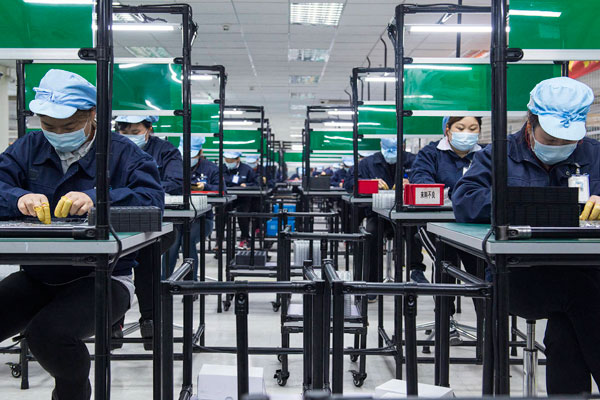
Politics is concentrated economy
Let’s analyse China’s experiment through this perspective. After the initial mistakes and cover-ups, when the fatality rate and the propagation speed of the virus were confirmed, the authorities decided to grind economic activity to a halt. The effects of this decision hit quickly: the first quarter of 2020 registered similar figures to the western powers, with GDP falling around 6.8% and industrial activity around 6%, whilst the internal consumption and investment were also in the negative.
The Chinese regime understood that if the pandemic got out of its control, the problem would not be a couple of negative quarters but a protracted and agonizing retreat. These quick and drastic measures were fruitful. China was the only big economy to end 2020 with positive growth and, according to forecasts, it will keep surpassing by twice the rate its direct competition.
GDP Growth
|
|
2021 |
2020 |
World |
4,0 |
-4,3 |
China |
7,9 |
2,3 |
US |
3,5 |
-3,6 |
European Union |
3,6 |
-7,4 |
Japan |
2,5 |
-5,3 |
(Source: World Bank)
The regime had already shown its differences to its western counterparts during the 2008 crisis. Then, according to official data, more than 20 million jobs were lost, but the start of various programmes of state investment- which amounted to more than a billion dollars- which were possible due to the enormous superavit, were able to substantially recover the employment and demand of its big industries.
The “efficacy” of the chinese plans against the pandemic draws in its gigantic and vigorous productive and commercial fabric, that reflects the advance of the productive forces in the last few years, and that is built, obviously, on the backs and the brutal exploitation of hundreds of millions of peasants recently arrived in the cities, under semi-slavery working conditions in order to draw bigger profits to chinese capitalists and the western multinational corporations. In addition to this, the horrifying environmental destruction is another of the fingerprints of this growth.
It is also evident that the chinese economy has also suffered the effects of the overproduction crisis, the instability of the financial sectors (which led to the crash of its stock exchange three years ago), the vertiginous growth of its bank and private business debts- a time bomb nestled on the insides of its economy. But the truth is that its competitors are in a much worse position and in a much more intense and deep retraction.
There are two figures that can help us understand the real dimension of this historical process. From 1980 hundreds of millions of people left the countryside searching for job prospects- a movement of internal migration that comprised as many people as four times the population of Germany- giving rise to a qualitative change in the country: urban population went from being 26% of the country in 1990 to 60% in 2020. Currently, chinese cities have more than 840 million inhabitants.
A demographic movement of these proportions was only possible due to big investments in industry, on a first stage coming from foreign capital. The enormous supply of a labour force in semi slavery conditions, without trade union rights, attracted a deluge of western capital, giving way to the famous “delocalisations” of factories and companies from US and Europe to the Asian southeast. This process, which absorbed a part of the liquidity of the big capitalist metropolis and led to immense profits for the multinational companies, contributed in the modernisation of the industrial fabric of China, its transport and infrastructures. A combined and unequal development, that, starting from a backward place and under the iron fist of the stalinist apparatus, led the country to achieve a high rate of modernity without having to go through the historical stages of the western capitalist powers.
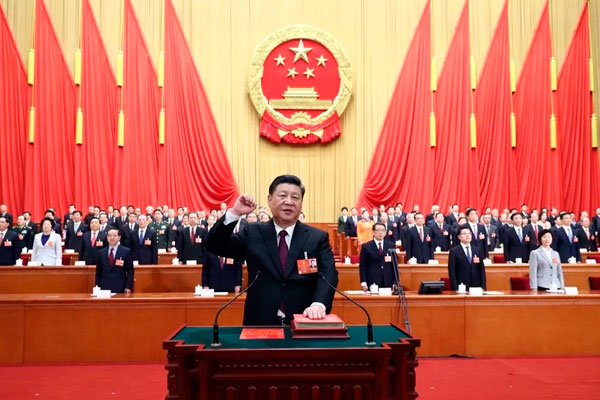
The capitalist restoration led a markedly different path in China than in Russia and the Eastern European countries; instead of facing a retraction period, with a fall in GDP only comparable to a war and the general impoverishment of the population, China registered decades of continuous growth. One figure only is more than enough to confirm this: if in the year 2000 the net growth of fixed capital in China comprised around 400 000 million dollars, in 2018 it reached 5.5 billion dollars, surpassing the US. It is not a coincidence that the inflection point happened between 2008 and 2010.
Growth of fixed capital (Billions of dollars)
Year |
China |
USA |
Ratio (1) |
|
|
|
|
China/US |
2000 |
0,4 |
2,4 |
16,7 |
2010 |
2,9 |
2,8 |
103,6 |
2018 |
5,7 |
4,3 |
132,6 |
(1) Percentage of the US total represented by China (Fuente: Indexmundi)
Due to this massive investment China was christened as the factory of the world and its goods draped every continent. Since 2008, the total value of its exports was never below 1.2 billion dollars, raising to 2.2 billion dollars from 2012 and, in 2020, the year of the pandemic, it has reached the record figure of 2.49 billion dollars, earning a commercial superavit of 535 030 million dollars, a record that was the biggest in five years![6]
US supremacy under threat
The rise of China and the decline of the West, although they are moving in opposite directions, are dialectically interrelated and punctuated by leaps from quantity to quality. Although the Asian country was assigned the role of producer of low-value goods and assembler of imported components, things have changed a lot.
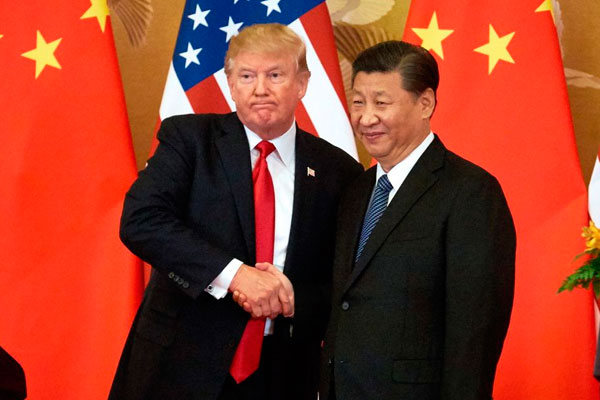
It is important to remember that when the leaders of the Chinese Stalinist bureaucracy embarked on the process of capitalist restoration, they carefully studied the dissolution of the USSR. The CCP nomenklatura decided to pilot the dismantling of the planned economy by protecting its interests at all costs, for which they resorted to maintaining strong centralisation and a powerful state sector. The party and the state continued to merge, albeit as tools in the service of capitalist accumulation.
The peculiar regime of Chinese state capitalism did not accept the role that the great powers had assigned to it in the world division of labour. The Chinese bourgeoisie realised that the conditions were ripe for them to compete with the big powers. The huge amount of capital they had at their disposal thanks to the trade surplus allowed them to cover their raw material supply needs and to invest millions of dollars all over the world. Latin America, Central America, Africa and many Asian countries are increasingly dependent on Chinese purchases and credits.
The evolution has been such that quantity has been transformed into quality. The US has lost its position as the world's banker. China is now a creditor of more than $5 trillion, a figure equivalent to 6% of global GDP.[[7] The Asian giant's share of the total owed to G20 countries by other nations rose from 45% in 2013 to 63% at the end of 2019. In the same period, the share of Japan, the second largest G20 creditor, remained unchanged at 15% (World Bank data). China is the largest holder of US debt after Japan.
But the changes are not limited to the financial sphere. China is striving for technological supremacy, and it is doing so consciously and persistently, as the following chart shows:
Investment in Research and Development (% of GDP)
|
|
2018 |
2010 |
2000 |
1998 |
World |
2,27 |
2,02 |
2,06 |
1,98 |
USA |
2,84 |
2,74 |
2,63 |
2,50 |
Germany |
3,09 |
2,71 |
2,40 |
2,21 |
China |
2,19 |
1,71 |
0,89 |
0,65 |
(Source: World Bank)
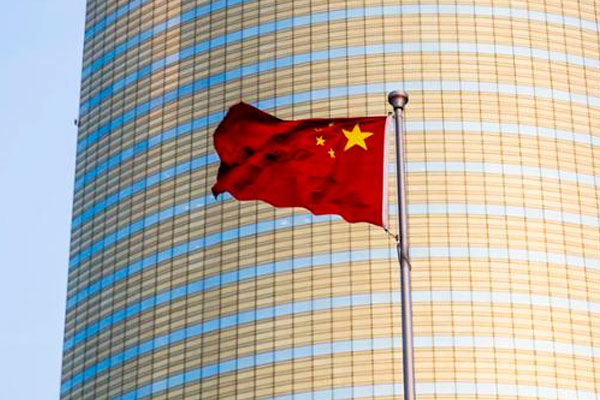
Although Germany spent a higher percentage of GDP on research investment than China in 2018, it lags behind in terms of hard cash: $0.1 trillion compared to $0.31 for the Chinese.
The race for technological dominance is being exploited by Beijing. Just to consider US imperialism's obsession with Huawei's advances is enough to see this clearly. Also relevant is its participation in the space race, which closed 2020 with the success of the Chang'e 5 mission to the Moon, which meant China's inclusion in the elite group of countries that have managed to bring lunar samples back to Earth. Of the two powers that hold such a title, one is the United States and the other is the former Soviet Union.
We stated above that COVID-19 was the consequence and not the cause of the enormous suffering we are experiencing, but, as Marxism explains, social and economic events are in flux and constantly changing, and under certain circumstances consequences become causes.
If even before the pandemic there was already a huge global dependence on Chinese medical supplies[8], the economic meltdown has provided more opportunities for China to take over this market. At the same time, the US threats of a trade war with its tariff sanctions have not borne fruit. During Trump's presidency, the US trade deficit with China, far from shrinking, increased by 13%..[9]
China has not yet unseated the US as the hegemonic power. The US economy maintains its primacy in important areas: higher GDP, higher labour productivity, the dollar is still the most widely used currency in the world market... but it is a process of living forces that has not ended yet. Who will prevail? It would be hasty to make a blunt and closed perspective, but the current economic and political circumstances are in the interests of the Beijing regime.
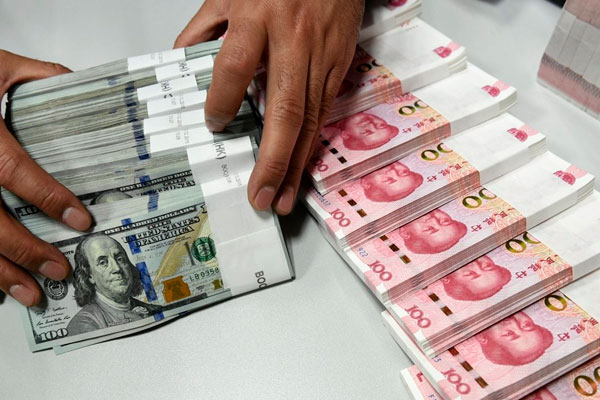
There are historical precedents which worth serious study. When the US wrested the sceptre from Britain, and it was precisely the terrible crisis that began in 1929 that allowed the Americans to deliver the final and decisive blow, Trotsky wrote: "...we do not rule out either that, given the present world scale of American capitalism, the next crisis will be extremely deep and acute. But there is absolutely nothing to justify the conclusion that this will restrict or weaken the hegemony of America. (...) It is just the other way around. In a period of crisis, the US will exercise its hegemony more fully, more brazenly and more brutally than in a boom period. The US will try to overcome its problems and ills mainly at the expense of Europe."[10]
The current crisis will give China more of an advantage.
Inter-imperialist struggle and class struggle
In November last year, Chinese imperialism won a new victory with the Regional Comprehensive and Economic Partnership treaty, signed by 15 countries in the Asia-Pacific region. Its members total more than 2.2 billion people, account for about a third of the world economy and a combined GDP of about 26.2 trillion dollars in the world's fastest growing region. It is a good response to the trade war unleashed by the US: China already exports more to Southeast Asia than to the US or Europe.[[11] Considering that the sorpasso has occurred during the pandemic, we can glimpse what may happen in the coming period.
The US has been losing ground to China for years in strategic areas, from Latin America to Africa, the Middle East and the Pacific. This reduction of its external sources of exploitation has translated at home into great social instability, increased class struggle and deep political polarisation. Historic movements like Black Lives Matter or the support gathered by Bernie Sanders are the expression of the leftward radicalisation of millions of working people of all races. But there is another side. The huge electoral support for Trump in the last elections, the offensive of fascist groups and the recent assault on the Capitol also show the anger and impotence of the impoverished middle classes and a state apparatus that feels humiliated on the world stage.
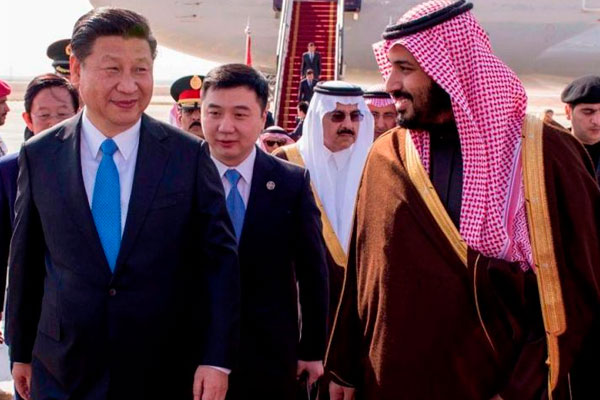
When we look at the Asian giant, we see different class relations, starting with the situation of the middle strata - a social sector which, when satisfied and optimistic about its future, becomes a real buffer in the class struggle. Although the figures provided by bourgeois analysts suffer from very loose parameters for considering who is part of the middle class and the petty bourgeoisie, the transformation that has taken place in recent years has been remarkable. In 1990, the US and Western Europe accounted for three quarters of the world's middle class despite representing one third of the total population.[12] As of 2018, it is China that accounts for almost 50% of the middle strata.[[13]
While the general tone of the class struggle is torn between continuous revolutionary outbreaks, defensive struggles against austerity policies and the growth of extreme right-wing populism, in China we see a scenario that oscillates between offensive strikes for a greater share of the pie and a striking social stability compared to what is happening in the US and other parts of the world. Between 2008 and 2019 real wages doubled in China, to the point that in 2016 Chinese wages surpassed the largest countries in Latin America and some EU countries such as Romania and Bulgaria. While the average hourly wage in China's industry tripled between 2005 and 2016, reaching $3.60, in the same period, the industrial sector wage in Brazil fell from $2.90 to $2.70 and in Mexico from $2.20 to $2.10.[14] In the same period, the industrial sector wage in Brazil fell from $2.90 to $2.70 and in Mexico from $2.20 to $2.10.[14]
It is also interesting to note the contradictions that this process of accumulation is provoking within the Chinese ruling class itself. The case of Ma Yun, owner of the Alibaba emporium, is quite significant.
Many sources state that this wealthy capitalist was concentrating too much power - some investors value his conglomerate at $359 billion - especially his subsidiary Aliplay, which with its loans to 20 million individuals and 500 companies was threatening competition for many banks with direct state backing. In reaction to this growth and the tycoon's public criticism of the government's economic policy, the authorities postponed sine die the IPO of his company AntGrup 48 hours before it was due to take place, from which he hoped to obtain a capitalisation of more than 30 billion dollars. Since then, rumours of a possible nationalisation have been swirling.
Chinese capitalism is in a period of ascendancy and the effects of the current crisis on its competitors will probably allow it to climb even higher. But it must be stressed that this is not a new form of virtuous capitalism capable of excluding contradictions. No country, no national economy, however powerful it may be, can disengage itself from the world market and its organic crisis in this epoch of imperialist decline.
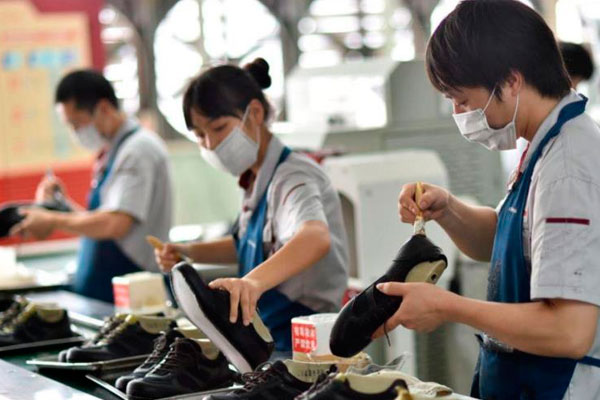
In a number of areas China is beginning to suffer from Werner's syndrome, a disease that causes the organism to age too quickly: grey hair, hardening of the arteries, heart failure, diabetes..., which in the case of an economic organism translates into a gigantic debt[15], financial speculation, real estate bubble, destruction of the environment...
To conclude we will allow ourselves the licence to quote Trotsky recommending the reader to change the term American capitalism for Chinese capitalism: "A new economic upswing (we cannot exclude it in advance) will have to rest not on an internal equilibrium, but on the present world economic chaos. American capitalism will enter a phase of monstrous imperialism, of an arms race, of interference in the affairs of the whole world, of military upheavals and conflicts".[16]
[1] Confirmed cases of coronavirus in Spain and the world
[2] Bolsonaro says Pfizer vaccine could turn people into alligators as side effect
[3] Trump suggests injecting disinfectant and light into Covid-19 sufferers to kill the virus
[4] Data from Agencia EFE published in La Vanguardia. China closes a city of 11 million inhabitants after more than a hundred cases
[5] The regime's ability to carry out a systematic and safe pandemic control over a considerable part of the prison population (five million), and who carry out productive work, is evidently highly questionable. The same applies to millions of peasants and workers who produce for large technological, textile, toy, etc. companies in overcrowded conditions. The conditions for social distance, PPE and health security will in many cases be conspicuous by their absence. What it does seem is that in the big urban centres the measures adopted have been much more drastic, forceful and effective than in Western countries.
[6] Indexmundi. Annual Historical Data Tables China.
[7] China's hidden credits to developing countries and its growing power as the world's "big lender"
[8] According to the Peterson Institute for International Economics, 50% of PPE protective suits, 71% of face masks, 38% of gloves and 58% of goggles used for sanitary protection consumed in Europe were made in China.
[9] The pandemic creates a new world order: everyone loses, China wins.
[10] Quoted from an article entitled Molotov's Baggage of Knowledge, September 1930
[11] Southeast Asia becomes China's largest trading partner
[12] The emergence of the middle class: a matter of emerging markets
[13] Credit Suisse Wealth Report annual report. China already accounts for half of the world's middle class.
[14] All wage data are from the World Labour Organisation's Global Wage Report 2018-2019
[15] While GDP has doubled in the last ten years, China's public debt-to-GDP ratio rose from 34% in 2010 to more than 63% in the third quarter of 2019, according to data from the Institute of International Finance. Adding household and non-financial corporate debt increased the debt-to-GDP ratio from 178% to 289% over the same period
[16] Germany, the key to the international situation, 26 November 1931Leon Trotsky. Struggle against fascism in Germany. FFE 2004, p. 96






